|
This issue of NanoNews-Now covers Nanomedicine. Editor Rocky Rawstern interviews J. Donald Payne of Nanospectra Biosciences, Sadik Esener (UCSD CCNE) and William Vine (NanoBioNexus), and Peter Searson of the Johns Hopkins Institute for NanoBioTechnology.
In our main article, Julian L. Zegelman, Director of Corporate Partnerships and Alliances at NanoBioNexus, writes an artice titled NanoBioNexus: a study in community building.
Next, the first of three interviews, this one with Sadik Esener (UCSD CCNE) and William Vine (NanoBioNexus) on the NanoTumor Center.
Following that are excerpts from several recent articles by the father of nanomedicine, Robert A. Freitas Jr.
Next up is Lynn Yoffee, of NanoBiotech News, with an article titled Nanomedicine and nano device pipeline surges 68%.
Contributing once again is Futurist Brian Wang, with his article titled On the way to Nanomedicine: Decisions and technology past and future.
Following Wang's article are two interviews, the first with J. Donald Payne of Nanospectra Biosciences, and the second with Peter Searson of the Johns Hopkins Institute for NanoBioTechnology
In the 5th of 6 articles on Building The Winning Nano Venture Team, Bo Varga covers What investors and customers look for in start-up companies.
And last, two nanomedicine art pieces by Tim Fonseca.
Select Quotes:
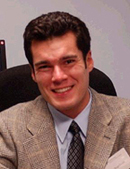
From NanoBioNexus: a study in community building
Although nanotechnology is not a single industry in itself but a collection of multidisciplinary technology platforms with broad applications across many fields, creation of localized community networks dedicated to identification, development, and commercialization of nanotechnology inventions remains important to overall success of any region attempting to benefit from the tremendous economic potential of nanotechnology.
—Julian L. Zegelman, Esq., Director of Corporate Partnerships and Alliances, NanoBioNexus
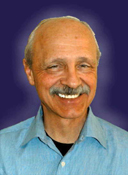
From: What investors and customers look for in start-up companies
Upon completion of this article, you will understand the key elements in the team that a professional investor or a major corporate customer needs to see in order to work with the start-up or early stage nano company. We include joint ventures, strategic alliances, and OEM relationships - as well as direct sales - in the customer category.
—Bo Varga, Managing Director of Silicon Valley Nano Ventures.
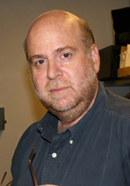
From Interview on the UCSD Center of Cancer Nanotechnology Excellence, AKA NanoTUMOR Center
NN: Looking out 10 years, what are your hopes regarding medical diagnostics and treatments stemming from our understanding of the nanoscale?
Our hope in general is to be able to reduce suffering and death caused by cancer and to significantly improve the quality of life for cancer patients and their families. More specifically, we hope to develop platforms that can detect cancer at its earliest stage. We hope to be able to monitor and treat residual cancerous cells after treatment and be able to provide treatment with high specificity and efficiency eliminating side effects and the need to perform open surgery to remove tumors.
—Sadik Esener, Principal Investigator at UCSD Center for Cancer Nanotechnology Excellence (CCNE)
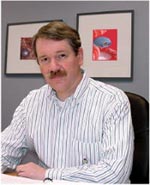
The greatest power of nanomedicine will emerge, perhaps in the 2020s, when we can design and construct complete artificial nanorobots using rigid diamondoid nanometer-scale parts like molecular gears and bearings. These nanorobots will possess a full panoply of autonomous subsystems including onboard sensors, motors, manipulators, power supplies, and molecular computers.
—Robert A. Freitas Jr., Author, Nanomedicine Vol.'s I and IIA, Senior Research Fellow, Institute for Molecular Manufacturing.

From Nanomedicine and nano device pipeline surges 68%
According to data compiled in the NanoBiotech News 2006 Nanomedicine, Device & Diagnostic Report, 130 nanotech-based drugs and delivery systems and 125 devices or diagnostic tests have entered preclinical, clinical, or commercial development, meaning the clinical pipeline has grown 68% since 2005.
—Lynn Yoffee, NanoBiotech News
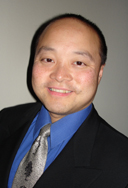
From On the way to Nanomedicine: Decisions and technology past and future
Past increases in lifespan and health have made for a richer and better society.
Those who oppose the development of better medicine when we could create it are in favor of continued suffering, deterioration, and unnecessary death. The arguments that society will suffer are without a firm basis. A false assumption is that society will not constructively adapt to improved health and longer lifespans.
—Brian Wang Futurist, Member of the Nanoethics Group advisory board.
From Interview with J. Donald Payne of Nanospectra Biosciences
NN: What is your vision for the AuroShell™ microparticles and AuroLase™ Therapy?
We believe AuroLase Therapy will have broad applications in cancer. We will initially focus on head and neck cancer to fill the significant unmet medical need in this serious cancer, and then expand to other cancers after FDA approval. We hope to start our first human trial later in 2006.
—J. Donald Payne President and CEO of Nanospectra Biosciences
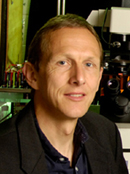
From Interview with Peter Searson, Director, Johns Hopkins Institute for NanoBioTechnology
NN: Looking out ten years, what are your hopes regarding medical diagnostics and treatments stemming from our understanding of the nanoscale?
Very simply, we will develop new scientific tools and create new technologies for the diagnosis and treatment of diseases and medical conditions. We will develop new tools will allow us to develop a better understanding of how cells function, and misfunction, at the molecular level. Research will also focus on the development of new diagnostic and therapeutic strategies, for example, for the early detection and treatment of cancer.
—Peter Searson Director, Johns Hopkins Institute for NanoBioTechnology
|






